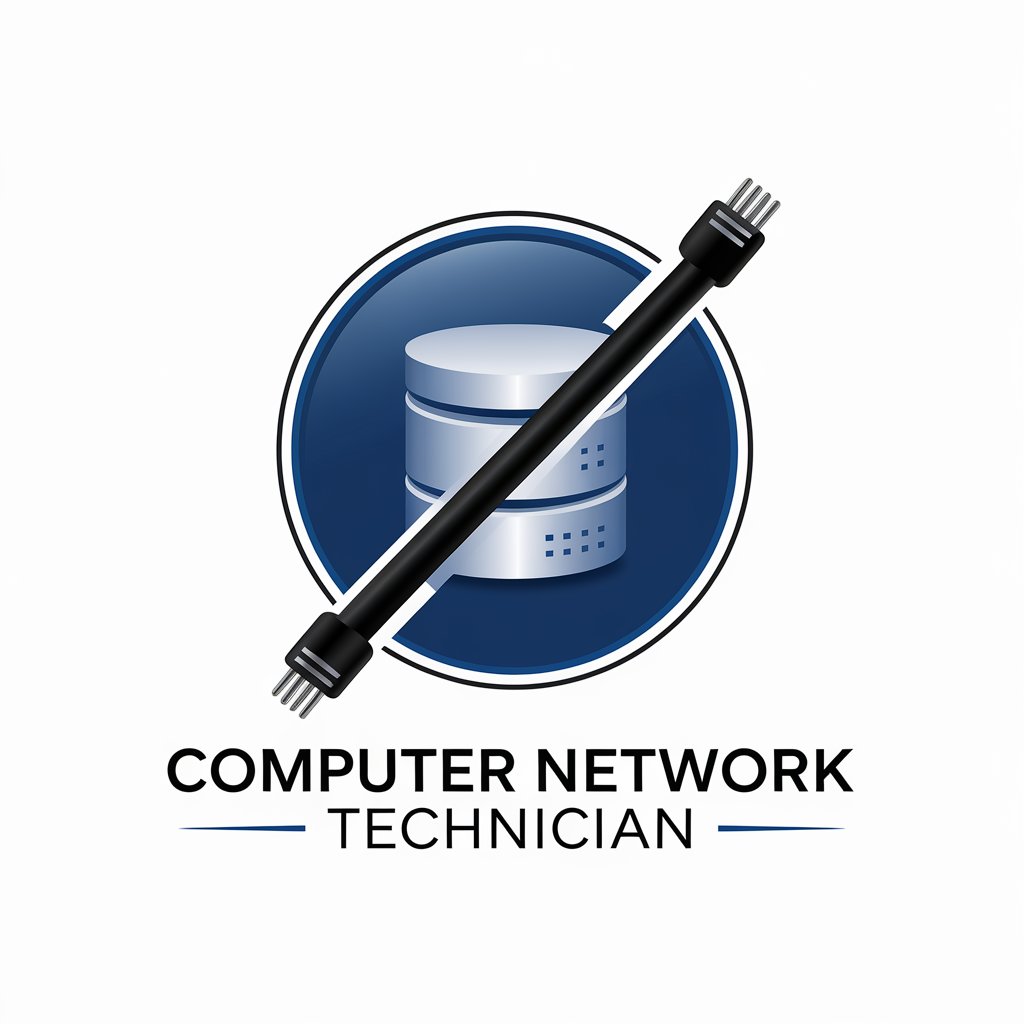
Telecommunication Engineer (Research)-AI tool for telecom research support
AI-powered assistant for telecom R&D innovation

Advances communication tech for enhanced, reliable data transmission and optimizes next-gen networks.
Optimize Network Performance
Suggest Data Techniques
Enhance User Experience
Generate R&D Breakthroughs
Get Embed Code
Introduction to TelecommunicationTelecommunication Engineer Research Functions Engineer (Research)
A Telecommunication Engineer (Research) focuses on advancing the technologies that enable data transmission and communication systems. Their primary function involves the research, design, development, and optimization of cutting-edge communication networks. This may include work on areas like 5G/6G, optical networks, wireless systems, and protocols that ensure high-speed and reliable communication. The goal is not only to improve current infrastructure but to foresee and shape the evolution of telecommunication technologies. A typical research scenario could involve working with machine learning algorithms to optimize network traffic management or simulating propagation models to predict signal behavior in emerging wireless systems. A key aspect of this role is collaboration with other experts in areas such as computer science, electronics, and signal processing to solve complex, multi-disciplinary challenges.
Main Functions of Telecommunication Engineer (Research)
Design and Development of New Communication Protocols
Example
Designing a new MAC (Medium Access Control) layer protocolTelecommunication Engineer Research Overview for 5G NR (New Radio) to increase spectral efficiency.
Scenario
In the scenario where a telecommunication engineer is tasked with improving the efficiency of 5G networks in urban areas, they would analyze the existing MAC protocols and design an updated protocol that accommodates high user density without reducing performance. They may utilize techniques like orthogonal frequency division multiplexing (OFDM) and advanced coding schemes to address challenges of signal interference and spectrum congestion.
Network Performance Analysis and Optimization
Example
Analyzing traffic patterns on a mobile network to optimize load balancing between cells.
Scenario
For a network service provider facing performance degradation in a specific geographic region due to high traffic demand, the telecommunication engineer would collect real-time data, perform traffic analysis, and optimize resource allocation. This could involve dynamic cell switching, adjusting transmission power, or introducing advanced algorithms to predict and mitigate network congestion based on user mobility patterns.
Simulations and Modeling of Communication Systems
Example
Simulating a 6G wireless network architecture to predict its performance in urban environments.
Scenario
When preparing for the rollout of next-generation communication technologies, the engineer may use tools like MATLAB or NS-3 to simulate how a 6G network would perform under different environmental conditions, such as dense cityscapes or rural areas. By adjusting parameters like signal propagation, interference, and network topology, the engineer can predict areas where the network may face challenges, allowing for targeted infrastructure improvements before deployment.
Ideal Users of Telecommunication Engineer (Research) Services
Telecommunication Operators and Service Providers
These entities benefit from telecommunication engineering research as they require cutting-edge technologies and innovations to stay competitive and meet the ever-growing demand for bandwidth and low-latency services. Research-driven insights help them design, implement, and maintain the most efficient, scalable, and reliable networks, including the integration of 5G/6G technologies and network optimization strategies.
Government and Regulatory Bodies
Governments and regulatory authorities can leverage the expertise of telecommunication engineers to guide policy development, spectrum allocation, and the standardization of new technologies. They benefit from in-depth research on emerging technologies to make informed decisions about infrastructure planning, spectrum management, and public safety communications, ensuring that the national telecommunication frameworks align with global trends and future-proof the country’s infrastructure.
Research Institutions and Academia
These users are interested in collaborating with telecommunication engineers to explore the theoretical and experimental aspects of next-generation networks. They benefit from research into cutting-edge technologies like quantum communication, advanced wireless systems, and AI-driven network management. Academia needs detailed, scientific data and modeling results to contribute to published research and shape future courses in telecommunication curricula.
Telecommunication Equipment Manufacturers
Telecommunication equipment manufacturers look for insights into the latest standards and requirements to build next-generation hardware like antennas, routers, and transceivers. They rely on telecommunication engineering research to develop prototypes and conduct validation tests for new equipment designed for 5G and beyond, ensuring their products are optimized for high-efficiency, low-latency, and high-capacity scenarios.
How to Use Telecommunication Engineer (Research)
Step 1
Step 2
Choose the 'Telecommunication Engineer (Research)' persona from the GPT list to access a version specifically tailored for in-depth telecom R&D tasks, such as 5G+ development, protocol optimization, and network architecture analysis.
Step 3
Prepare relevant materials—such as technical papers, simulation results, datasets, or standards references—for upload or discussion to enable contextual and high-level responses.
Step 4
Pose specific, technical questions or propose project scenarios. This GPT responds with detailed, jargon-appropriate insights on topics ranging from PHY/MAC layer protocols to traffic analysis in heterogeneous networks.
Step 5
Iterate on solutions by engaging in dialogue—request equations, architecture diagrams, optimization models, or references toTelecommunication Engineer Research Guide IEEE/ITU standards. Use feedback loops to refine network designs or simulation strategies.
Try other advanced and practical GPTs
クリプトニンジャ二次創作ジェネレーター
AI-powered creativity for CryptoNinja fans

Emma先生と英訳レッスン
AI-powered translation for fluent English.

GAM Assist (Now turbocharged with GAM7!)
AI-Enhanced Google Workspace Admin Assistant

Bachelorthesis Assistent
AI-powered thesis writing support at your fingertips

Delegado Assistente
AI-powered legal drafting for investigations
Assistente Jurídico - Em construção
AI-powered legal intelligence, at your service

Social | Viết bài quảng cáo bán hàng
AI-driven ad copy tailored for you.

Workout Plans
AI-Powered Workout Plans for Optimal Results

Domain Name Valuation Expert
AI-powered domain name valuation tool.

Gerador de Imagens Realistas
Hyper-realistic image generation powered by AI

Marciline - Trợ Lý Phù Thuỷ - Witchcraft Assistant
AI-powered guide for witchcraft and divination

Tư vấn tử vi, tứ trụ, thần số học, phong thuỷ
AI-powered Eastern metaphysics insights made simple

- Technical Writing
- Research Analysis
- System Optimization
- Protocol Design
- Network Simulation
Detailed Q&A About Telecommunication Engineer (Research)
What makes this GPT different from a general AI assistant?
It is designed specifically for professionals in telecommunications R&D. It incorporates domain-specific language, understands modern standards (e.g., 3GPP, IEEE 802), and supports advanced topics like 6G, mmWave, beamforming, and software-defined networking. It avoids generalist replies and emphasizes precision and research-grade insight.
Can this GPT assist in writing and reviewing technical research papers?
Yes, it can help generate, refine, and review research abstracts, literature reviews, methodology sections, and results interpretation. It also supports citation formatting (IEEE/APA), identifies gaps in logic, and aligns content with publication standards in IEEE Transactions or similar journals.
Does it support simulation-based design and analysis?
It can guide the design of simulation models (e.g., in MATLAB, ns-3, or Python-based frameworks), interpret outputs, suggest optimization algorithms (e.g., genetic, convex, reinforcement learning), and assist in modeling propagation or queuing behaviors for performance evaluations.
Is it capable of understanding real-world deployment challenges?
Yes, it incorporates practical knowledge including spectrum regulation, radio resource management, deployment topologies, and backhaul constraints. It can propose optimization strategies for MIMO systems, HetNets, and network slicing under real-world limitations.
How does it help in standards development or tracking?
It can summarize current trends in 3GPP releases, ITU-R recommendations, and IEEE 802 series; track draft proposals; and analyze protocol evolution. It can also assist in drafting contributions to working groups or evaluating interoperability between standards.






